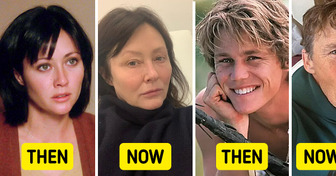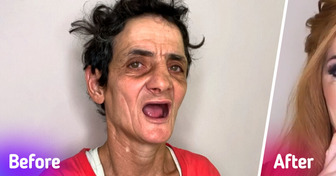There are many inspiring women in the world. Books have been written about them, and numerous movies and miniseries based on those aired in the past years. One of them is Netflix’s adaptation of Sarah Breedlove’s life, Madam C. J. Walker. She embodies the American dream, becoming the first self-made African-American millionaire. She had to endure betrayals, a hostile environment, and competition to create a successful brand that revolutionized Afro hair care. All that while fighting for change, especially for women in her community.
Now I’ve Seen Everything loves to shine a light on inspiring stories of people who decided giving up wasn’t an option. That’s exactly how C.J. Walker carved her way to success while helping as many people as she could at the same time.
- Sarah Breedlove was born in 1867 in Louisiana. Her parents and older siblings were enslaved people on a cotton plantation. Sarah was born free. At the age of 7, she became an orphan.
- After the death of her parents, she moved in with her sister Louvenia and her husband, Jesse Powell. Sarah began working as a maid at an early age. She had no time to study. Madame C. J. Walker recalled in her memoirs that she only studied formally for 3 months when she went to Sunday school as a child.
- At 14, Sarah hastily married Moses McWilliams. She did not do so because she was madly in love with him but because her sister Louvenia’s husband was a ruthless man. By getting married, Sarah could ensure she was safe. Four years later, Moses and Sarah had a daughter, A’Lelia, but 2 years later, Sarah’s husband died. So the 20-year-old was left alone with a little girl in her arms.
In 1888, Sarah moved to St. Louis. Her brothers, who worked as hairdressers, lived there. She got a job as a laundress and cook to pay for her daughter’s future public school education. Sarah received $1.5 a day.
Like all laundresses, Sarah suffered from being in direct contact with harsh chemicals. Skin diseases, dandruff, and poor sanitary conditions (not all houses had running water and central heating) made the woman almost bald.
From her hairdresser brothers, she learned about basic hair care. And a little later, Sarah became acquainted with Annie Malone’s hair cosmetics and met its creator. She became a sales agent for Malone and became seriously interested in hair care.
- While working for Malone, Sarah, now 37, moved to Denver with her daughter and came up with the idea of creating her own line of products especially aimed at African-American women. After lots of experiments with different components, she finally had a successful outcome. Sarah then built her own business in parallel.
- In 1906, she married Charles Joseph (C. J.) Walker and took his name. C. J. also became her business partner: he worked in advertising, so he gave his wife valuable advice on promotion. Sarah walked the city door to door selling her products, teaching African-American women the finer points of hair care and showing them how to style their hair.
- That same year, Sarah decided to expand the business, so she and her husband traveled to the southern and eastern states. A’Lelia was now an adult and had finished school, so she helped her mother and began managing all the mail orders in Denver.
- After two years, Madame C. J. Walker moved with her family to Pittsburgh. There they opened a beauty salon and a school that trained professionals who knew everything about hair care and how to sell cosmetics.
- In 1910, Madame moved to Indianapolis, where she established the headquarters of Madam C. J. Walker Manufacturing Company. She built a factory with a laboratory, a hairdressing salon, and a beauty school, where she trained her sales agents. By 1917, Madam C. J. Walker had provided jobs and good salaries for nearly 20,000 women. Her agents were paid from $5 to $15 per day.
- Sarah wanted African-American women to strive for financial independence, so she encouraged women to be entrepreneurs and taught them how to manage their finances and run businesses.
- The richer Madame C. J. Walker became, the more time she devoted to charity and political affairs. Sarah lectured, fought social injustice, and donated money to scholarship funds. Before her death, she bequeathed almost 100 thousand USD to orphanages and various social institutions. In addition, according to her will, 2/3 of the future profits from her production would go to charity.
- Madame died at the age of 51. She was considered the wealthiest African-American woman. At the time of her death, Walker’s legacy was estimated to be between $500,000 and $1 million. The obituary said that Sarah was not yet a millionaire two years before her death but hoped to become one someday. And not because she needed the money for herself, but because of the profit she could make with its help.
Madame C. J. Walker driving an automobile in 1911.
Madame C. J. Walker is a role model for modern societies because she spent all her energy building a business.
Are you an entrepreneur too? Tell us your success story and tell us what advice you would give to someone who wants to get off the beaten path like you and Madame C. J. Walker.












